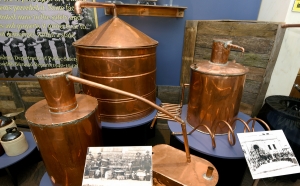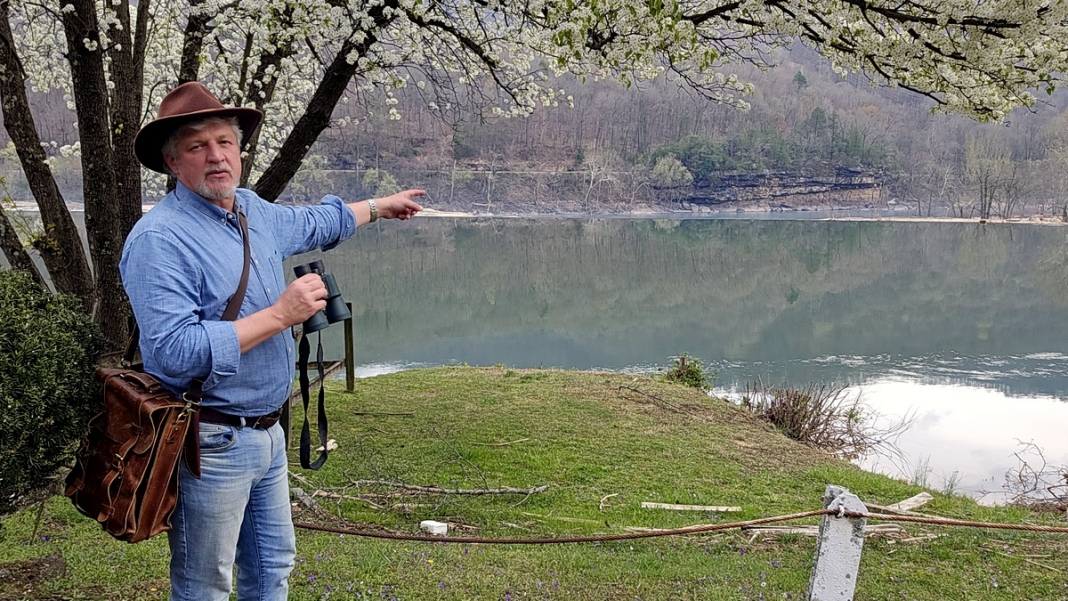CHARLESTON, W.Va. — Nationwide prohibition against alcohol consumption was launched in 1919 in the U.S., but West Virginia enacted its ban much earlier. The results were deadly.
In 1913, West Virginia passed the Yost Law, which was implemented on July 1, 1914. It imposed drastic changes in the lives of some West Virginians. On implementation, about 900 men in the Wheeling area alone lost their jobs, and 1,200 saloons across the state closed.

Despite the effort, many citizens with an appetite for alcohol would continue to get it wherever they could, and many who lost jobs in the legitimate booze industry would take their businesses underground. If they could avoid arrest, the profits would be huge.
The challenge of enforcement was also huge. The W.Va. State Police would not be created for another five years, so sheriffs, constables, and city police officers bore the burden of enforcement, which proved costly. The new law also created the Department of Prohibition, and State Tax Commissioner Fred O. Blue would become its first commissioner.
The first local official to pay the ultimate price was George T. Shires, the police chief for Ronceverte. Shires arrested Will Stewart and charged him with bootlegging. Stewart surrendered without resistance but then took the chief by surprise when he pulled a revolver from his overalls and shot him. After Shires fell, Stewart shot him twice in the back. He was arrested, convicted of murder, and executed on July 2, 1915, at the West Virginia Penitentiary at Moundsville.
Though alcohol was now illegal in West Virginia, it was still legal and accessible in Ohio. So, it did not take long for enterprising bootleggers to begin picking up their product across the river for secret distribution in the Mountain State, and it did not take long for West Virginia enforcement officers to figure that out.
On June 13, 1916, Kanawha County Deputy Sheriff Henry Voiers spotted a man riding on a coal train in Ronda on Cabin Creek. The subject was known to be involved in smuggling booze by train from Ohio.
As the deputy attempted to arrest him, the suspect opened fire. There was an exchange of gunfire until Voiers was mortally wounded. The shooter escaped on foot after engaging in a shootout with Chesapeake & Ohio railroad police.
On February 10, 1919, Grafton Police Chief J.E.B. Phillips arrested a man for possessing two pints of illegal liquor. When they arrived at the jail, the suspect pulled a .38 caliber revolver and fired two shots. One struck Phillips, who was taken to the hospital, where he died the following evening.
While local law enforcement officers were fully engaged in the dangerous work of alcohol enforcement, the Department of Prohibition had its own enforcement agency. Unlike local officers, Prohibition officers could give their full attention to the matter. They would also find this very costly.
The officers represented a threat to the livelihood of moonshiners, and many of them took it very personally.
On Monday, August 11, 1919, Prohibition Officer Will Farley and his partner raided a still, dismantled it, and carried it to his home near Hart’s Creek as evidence. Later that night, three moonshiners broke in and shot Farley as he lay in bed, killing him. His partner, who had been in another room, fired at the suspects as they fled. The moonshiners meant to make a statement.
Moonshiners made a similar statement in Wayne County, where Prohibition Officer William Meade and other officers had conducted several raids. On Sunday, February 12, 1922, Meade was shot and killed in an ambush. He was 48 years old and had worked for the agency for only two months.
The year 1923 would prove a costly one for those charged with enforcing alcohol laws. On February 25, Deputy Commissioner T. E. Rutheford was shot and killed while raiding a still in Wyoming County, and Prohibition Officer Mose Elswick was shot and killed while raiding a still in Kanawha County on September 23.
By now, the West Virginia State Police were fully operational and were having an impact. They would also have to do their share of enforcing the Yost Law, which would prove costly.
On October 22, 1926, state troopers were led to a still near Richwood by a 13-year-old boy. The following day, the moonshiners spotted the troopers and opened fire. Troopers wounded two of the operators and captured the still. The injured were taken into custody, and the troopers left.
When they returned to the still later that evening, they were ambushed. Private Lowe was struck several times and would die five days later without ever regaining consciousness.
There were many reasons someone would choose to become a prohibition officer during such a violent time. Some may have craved the excitement. Some may have liked the idea of a steady paycheck. Some may have believed it was a cause worth fighting for.
Gus Simmons had been a farmer when moonshiners gave his son illegal liquor, and he decided it was time to change professions. He became a prohibition officer. His career came to an abrupt end. On July 11, 1927, he and three other officers were searching for a still in Wyoming County. There, they were ambushed by several members of a family. Officer Simmons was shot and killed.
Several other officers would die before Prohibition was ended in West Virginia in 1934. Then, with the stroke of a pen, the law that so many had died enforcing was no more.
Sign up for a FREE copy of West Virginia Explorer Magazine in your weekly email. Sign me up!



Just as a footnote, the Yost Law was named for a state legislator, Ellis Yost. He and his brother, Fielding Yost, the legendary football coach at Michigan, grew up in Fairview (Marion County) and both played football for the WVU Snakes (the school's original nickname) in the 1890s.